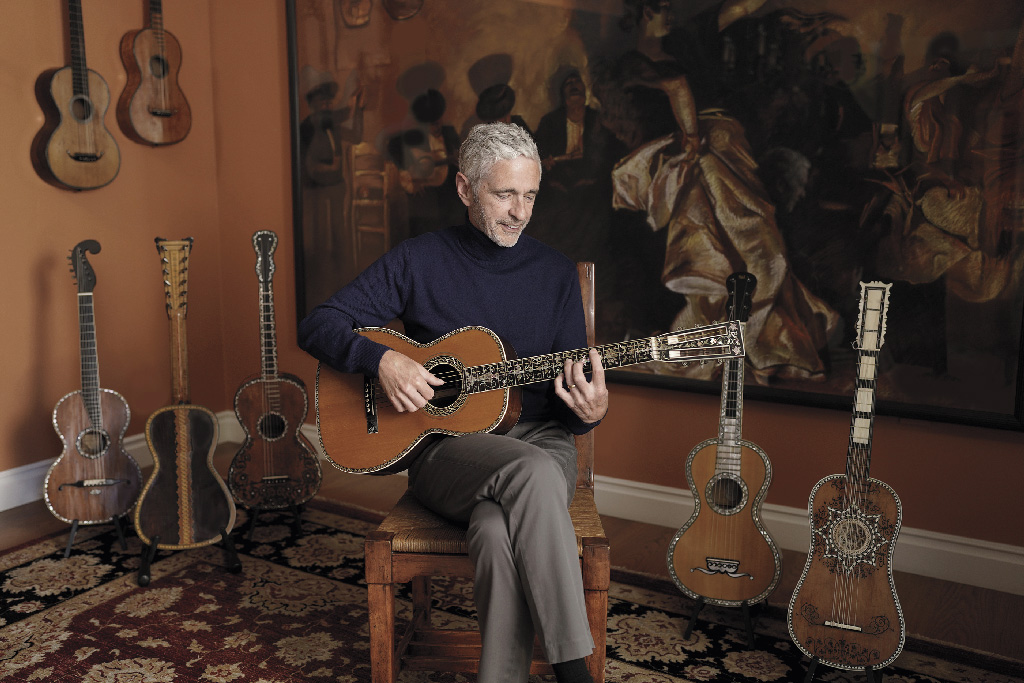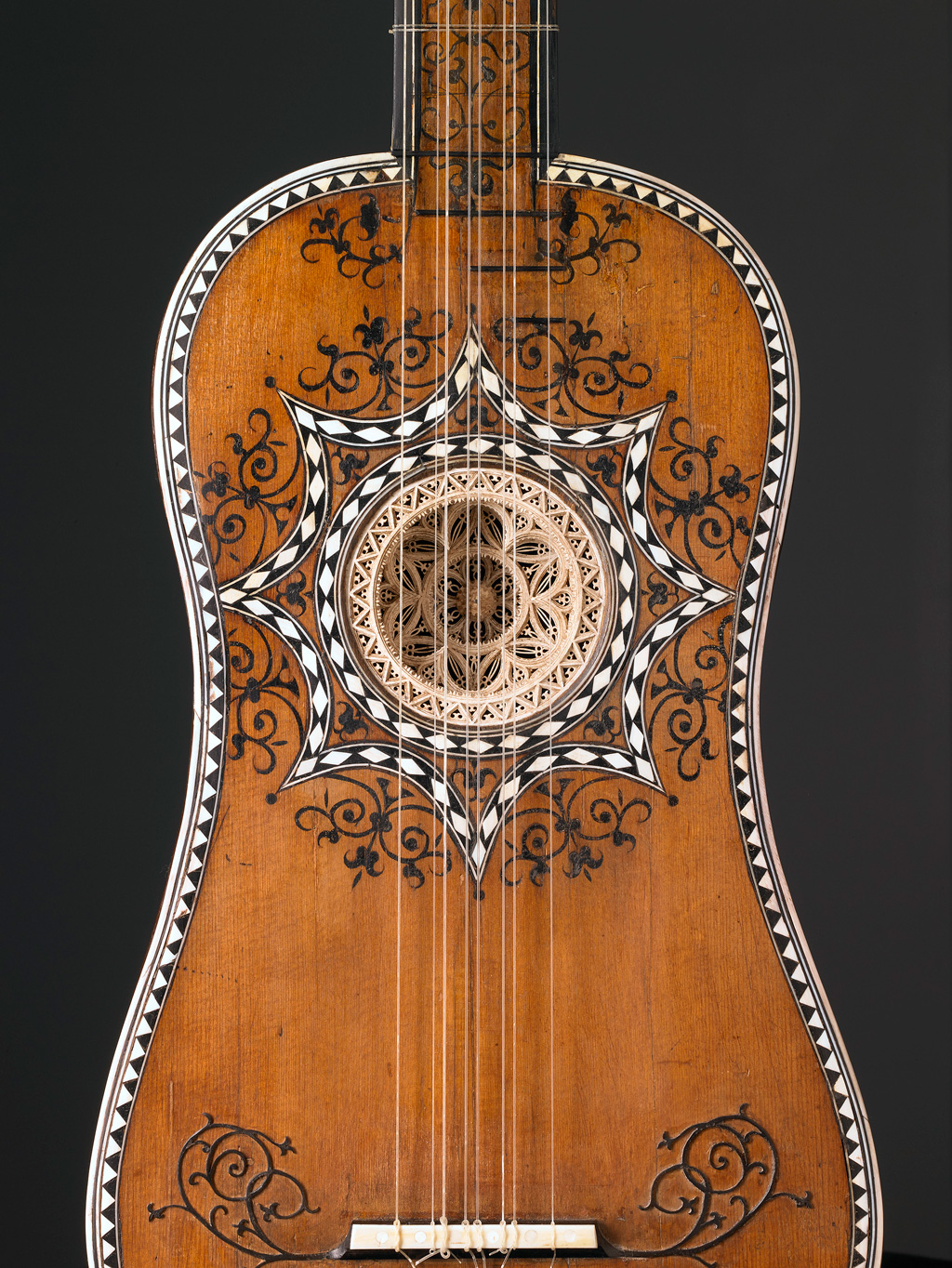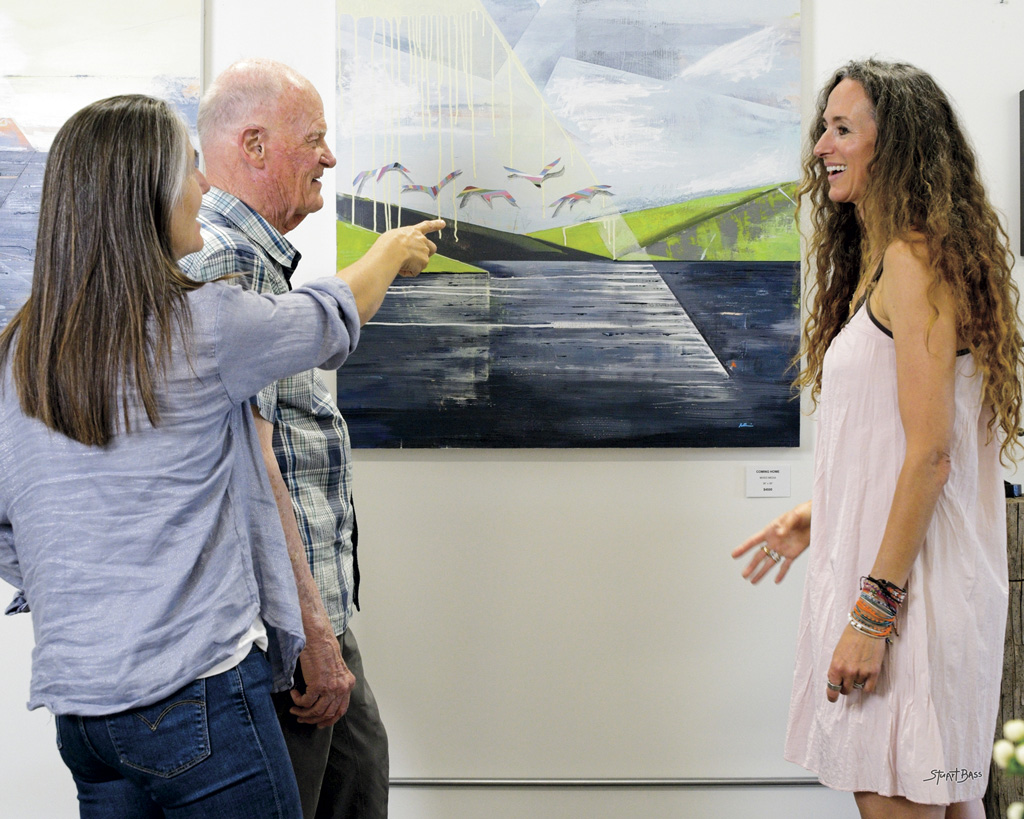News
This Marinite Has One of the Rarest Historic Guitar Collections in the World
 Courtesy of Jeff Wells
Courtesy of Jeff WellsJeff Wells was a classical guitar musician with a master’s degree from the S.F. Conservatory of Music that he put to use gigging at the Mark Hopkins and the Redwood Room in San Francisco, when something happened that changed his song forever.
He had been accepted into the Ph.D. program at the Peabody Institute of Johns Hopkins when the head of the department, the legendary guitarist Aaron Shearer, abruptly left. Not wanting to study under Shearer’s protégé, Wells decided not to go. Soon, a chance opportunity led him to a big left turn and the world of finance, where he made his career. But he never gave up his love of guitar.
“I’m a collector guy and I had about 15 modern-era guitars from some great makers,” Wells says. But a purchase he made on a lark in Switzerland shifted his emphasis for good. “I bought a German-made, 1820 Joseph Rieger guitar for no other reason than it looked exotic with its bridge mustachios, unusual tuning machines and smaller size.”
Wells was hooked. Semi-serious collecting followed until he met James Westbrook, a leading authority on historical guitars, and began focusing his collection on instruments “in the main line of evolution” from the 1600s, 1700s and 1800s. The result is the 61-piece Austin-Marie Collection (named after his son and daughter), all documented in a recently released book filled with lush photographs and descriptions.
Wells says that what attracts him to these guitars is their beauty and histories. “I have a few Spanish guitars from the Peninsular War that are one-of-a-kind,” he says. “The only way they were salvaged was because British officers brought them back to London after the war; they wouldn’t have made it otherwise. Things like that I found fascinating; it’s been a great history lesson.”
He says another unique thing about these ornate and finely crafted guitars is how they look. “It shows how, regionally, even within Europe, whether it be Vienna, Paris, London or Madrid, how much different guitars were,” he says, although the building of train systems in the early 19th century led to more standardization. “I am attracted to the whole evolutionary journey of the guitar and how they experimented to get to the modern era — utilizing different string configurations going from four courses [sets of double strings] to five courses to five individual strings to six individual strings, and so on.”
For his collection, valued at a few million dollars, storage is obviously very important. He keeps the guitars in a climate-controlled space but says that Marin, because of its low humidity, is actually a great place to house a collection like his. And although he tries to buy guitars that don’t require a lot of restoration, he does have a guy, local luthier Alan Perlman. “He’s the top guy to go to whether you have a Stradivarius violin or a high-end musical instrument,” says Wells. Replacing bridges is the most common repair: “You can’t have a bridge that lasts 300 or 400 years. It’s impossible.”
Wells love of music has trickled down: often, the whole family will often jam together. His son “shreds” rock music and his daughter has made a career of performing and writing songs for people like Beyoncé and other major artists. But the person he’s most needed buy-in from is his wife. “When you pay over $100,000 for an instrument, it begs the conversation,” he says; luckily, she has been very supportive and interested in the collecting process. “And, you know, these things are not getting any cheaper.”












